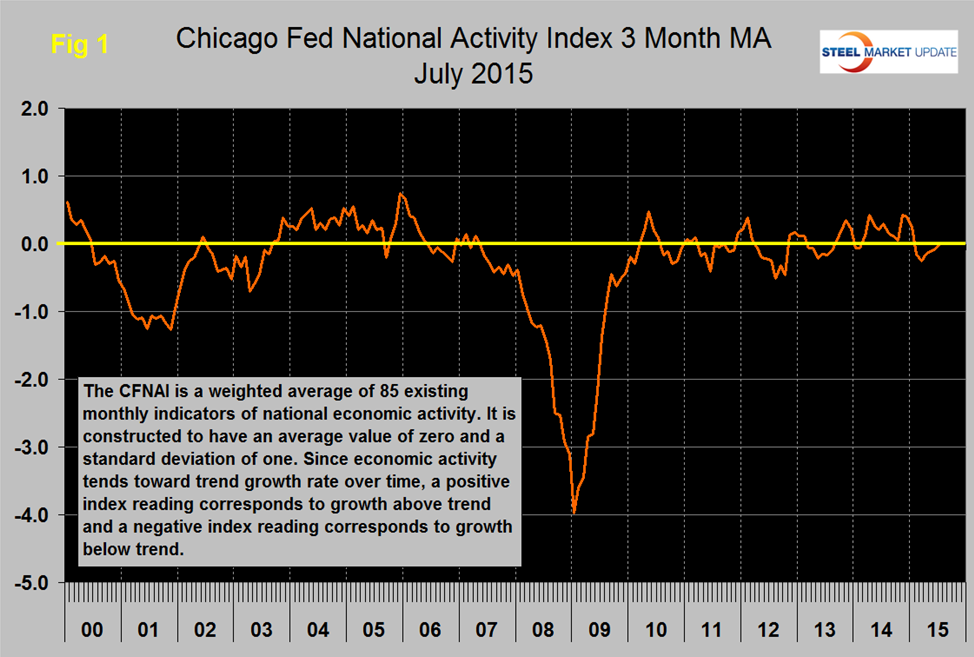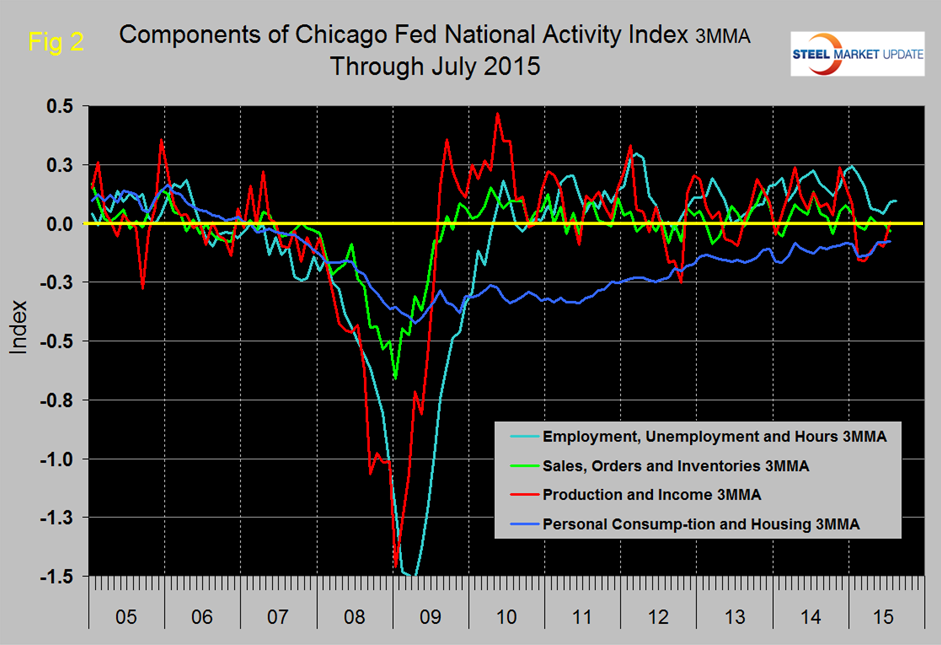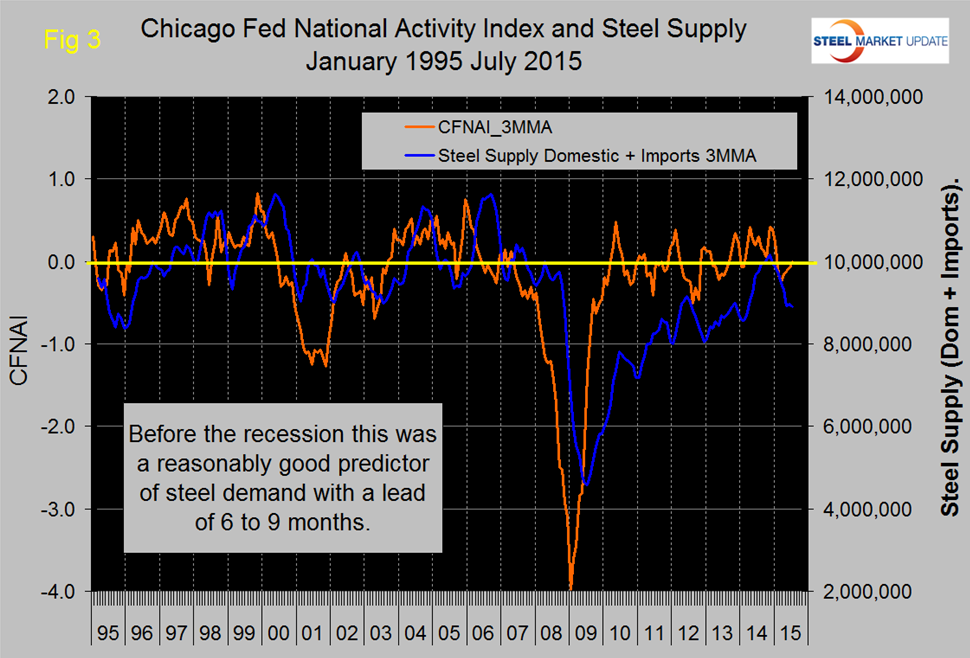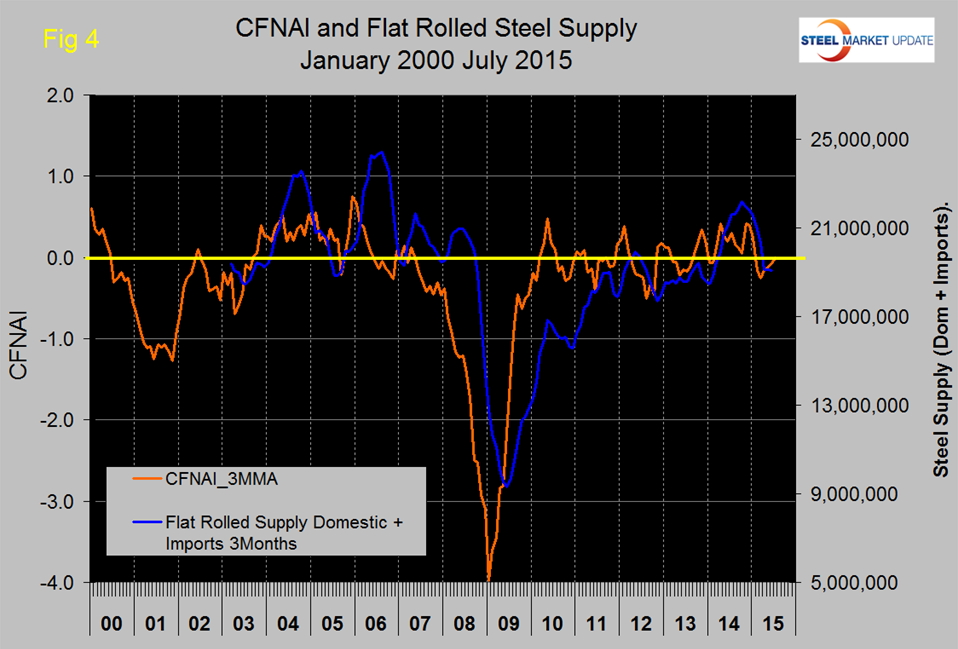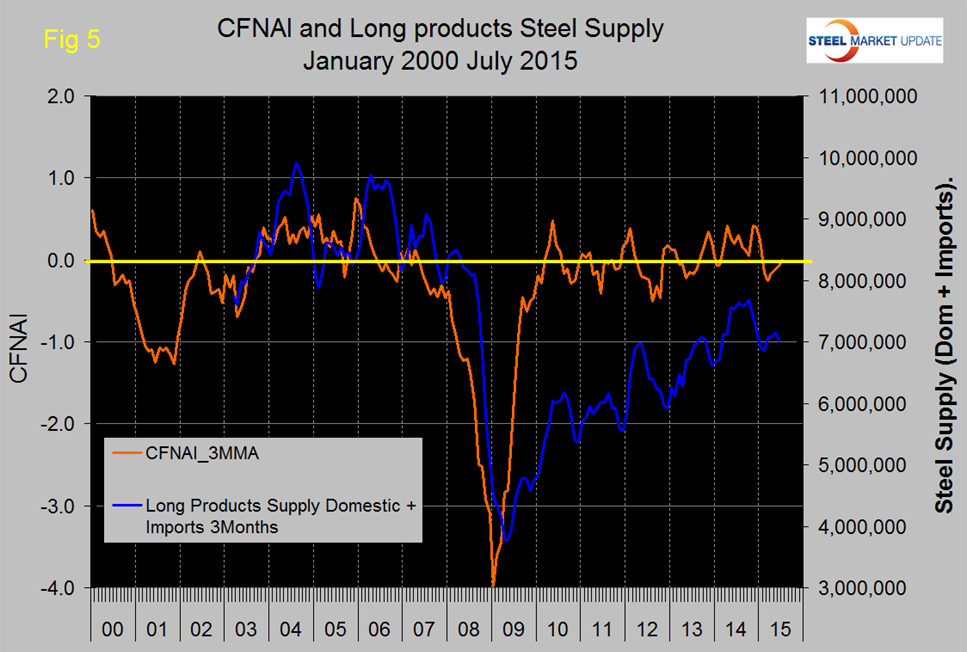Economy

The Chicago Federal Reserve National Activity Index and Steel Supply
Written by Peter Wright
August 24, 2015
The following is the Chicago Federal Reserve statement followed by our own graphical analysis. The CFNAI is an excellent reality check for much of the economic analysis that we routinely provide in The Steel Market Update and is also a reasonably good predictor of steel demand with a six to nine month lead. For example by the time the steel market went off the cliff in September 2008, the CFNAI had been signaling an increasingly severe problem for eight months. An explanation of the Index is provided at the end of this piece.
![]() Index shows economic growth picked up in July
Index shows economic growth picked up in July
Led by improvements in production-related indicators, the Chicago Fed National Activity Index (CFNAI) rose to +0.34 in July from –0.07 in June. Two of the four broad categories of indicators that make up the index increased from June, and three of the four categories made positive contributions to the index in July. The index’s three-month moving average, CFNAI-MA3, edged up to a neutral reading in July from –0.08 in June. July’s CFNAI-MA3 suggests that growth in national economic activity was at its historical trend. The economic growth reflected in this level of the CFNAI-MA3 suggests limited inflationary pressure from economic activity over the coming year. The CFNAI Diffusion Index, which is also a three-month moving average, moved up to +0.06 in July from a neutral reading in June. Fifty of the 85 individual indicators made positive contributions to the CFNAI in July, while 35 made negative contributions. Forty-four indicators improved from June to July, while 40 indicators deteriorated and one was unchanged. Of the indicators that improved, 12 made negative contributions.”
Figure 1 shows our analysis of the 3MMA of the CFNAI through July which has risen for each of the last four months and in July reached the neutral threshold (see explanation below).
Figure 2 shows the trends of the four main sub-components.
There has been a gradual five year improvement in personal consumption and housing that is ongoing though still below the neutral level. The other three sub-components continue to be erratic, with employment and hours worked currently the strongest.
Figure 3 shows that the CFNAI has historically been a reasonably accurate leading indicator of steel demand (apparent supply) with a lead time of six to nine months.
SMU monitors several benchmark indicators to evaluate whether steel consumption is where it should be based on historical patterns. Total steel supply was closing the gap but in the last eight months has fallen off again. Figure 4 and Figure 5 show this same relationship for flat rolled and long products separately and the difference is quite dramatic and in agreement with our analysis of steel service center shipments.
Flat rolled driven mainly by manufacturing is about where it should be but long products driven mainly by construction is still depressed. Based on the historical lead of the CFNAI it looks as though total steel demand will pick up slightly in the remainder of 2015.
Explanation: The index is a weighted average of 85 indicators of national economic activity drawn from four broad categories of data: 1) production and income; 2) employment, unemployment, and hours; 3) personal consumption and housing; and 4) sales, orders, and inventories. A zero value for the index indicates that the national economy is expanding at its historical trend rate of growth; negative values indicate below-average growth; and positive values indicate above-average growth. When the CFNAI-MA3 (three month moving average) value moves below –0.70 following a period of economic expansion, there is an increasing likelihood that a recession has begun. Conversely, when the CFNAI-MA3 value moves above –0.70 following a period of economic contraction, there is an increasing likelihood that a recession has ended. When the CFNAI-MA3 value moves above /+0.70 more than two years into an economic expansion, there is an increasing likelihood that a period of sustained increasing inflation has begun.

Peter Wright
Read more from Peter WrightLatest in Economy

Consumer auto delinquencies: Warning sign for consumer health?
The Consumer Federation of America estimates rising total auto debt at a staggering $1.66 trillion, along with increasing repossessions and a sharp increase in delinquencies.

Beige Book: Regional market growth remains mostly flat
Economic growth in some US regions in September was offset by challenges in others, causing the market to appear largely unchanged overall, according to the Federal Reserve’s latest Beige Book report.

ISM September survey captures deepening manufacturing gloom
The Institute for Supply Management’s (ISM) latest monthly report on manufacturing reflects a bleak view of American industry in September.

Key industries concerned over government shutdown’s impact on steel, manufacturing
Trade groups cautioned that a prolonged shutdown could strain US industry.

Chicago Business Barometer catches cold winds of contraction in September
The Chicago Business Barometer's September reading indicates a softening in overall business activity in the Midwest for the third consecutive month, with new orders and backlogs retreating further.

